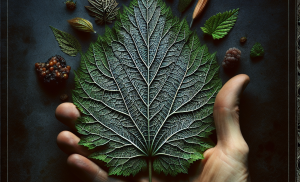Mindful Awe: The Path To A Richer, More Appreciative Life
Imagine if you had the ability to experience a deeper sense of gratitude and appreciation for the world around you, leading to a richer, more fulfilling life. It may seem out of reach, but there is a transformative practice called “Mindful Awe” that can guide you towards this profound state of being. By immersing yourself in the present moment and cultivating a sense of wonder, Mindful Awe allows you to tap into the beauty and intricacies of everyday life, creating a newfound appreciation for the small miracles that surround you. Through this article, you will discover the power of Mindful Awe and how it can unlock a world of joy, gratitude, and contentment.
Exploring Mindful Awe
Understanding Awe and Mindfulness
Awe and mindfulness are two powerful concepts that can greatly transform our lives. Awe is a profound feeling of wonder and amazement that we experience when confronted with something greater than ourselves. It can be inspired by nature, art, or even the achievements of others. Mindfulness, on the other hand, is the practice of intentionally paying attention to the present moment with an attitude of openness and curiosity.
When we combine awe and mindfulness, we cultivate a state of mind that allows us to fully appreciate and engage with the world around us. It is about being fully present and aware of the beauty and interconnectedness of life. By embracing mindful awe, we can tap into a powerful source of joy, gratitude, and inspiration.
The Importance of Awe in Life
Awe is not just a fleeting emotion; it has the potential to deeply impact our well-being and overall happiness. Research has shown that experiencing awe can expand our perceptions of time, making us feel like we have more available time. It can also increase our sense of connectedness with others and foster feelings of empathy and compassion.
Awe has the ability to shift our perspective and help us transcend our everyday worries and concerns. It reminds us of the vastness of the world and our place in it, instilling a sense of humility and reverence. By regularly cultivating and embracing awe in our lives, we open ourselves up to a richer, more appreciative way of living.
The Benefits of Mindfulness
Mindfulness has been gaining increasing attention in recent years due to its numerous benefits for mental, emotional, and physical well-being. When we practice mindfulness, we train our minds to focus on the present moment and let go of worries about the past or future.
Research has shown that mindfulness can reduce stress, anxiety, and depression. It also enhances our ability to regulate our emotions and increases our capacity for resilience. Additionally, mindfulness has been found to improve cognitive function, attention, and memory.
By incorporating mindfulness into our lives, we can experience a greater sense of calm, clarity, and contentment. It allows us to fully engage with the present moment, savoring the beauty and wonders of life.
Cultivating Mindfulness
Practicing Meditation
One of the most effective ways to cultivate mindfulness is through regular meditation practice. Meditation involves intentionally focusing our attention on a specific object or sensation, such as the breath. It helps us develop concentration and awareness, allowing us to observe our thoughts and emotions without judgment.
To start a meditation practice, find a quiet and comfortable space where you can sit or lie down without distractions. Close your eyes and bring your attention to your breath. Notice the sensation of the breath coming in and going out. As thoughts arise, gently acknowledge them and return your focus to the breath.
Start with just a few minutes of meditation each day and gradually increase the duration as you become more comfortable. Over time, meditation can help train your mind to be more present and cultivate a deep sense of inner peace.
Engaging in Mindful Activities
While meditation is a powerful tool for cultivating mindfulness, there are also many other activities that can help us stay present and engaged with the world around us. Mindful activities include anything that allows us to fully immerse ourselves in the present moment and pay attention to our senses.
For example, you can engage in mindful walking by paying attention to the sensations in your feet as they touch the ground. Mindful eating involves savoring each bite of food, fully appreciating the flavors, textures, and smells. Other mindful activities can include yoga, gardening, painting, or simply spending time in nature.
By consciously engaging in these activities with a sense of curiosity and openness, we can cultivate a deep sense of mindfulness and appreciation.
Developing Mindful Habits
In addition to formal mindfulness practices, it is important to develop mindful habits throughout our daily lives. Mindful habits involve bringing a sense of awareness and presence to even the most mundane activities.
For example, when brushing your teeth, rather than letting your mind wander, focus on the sensation of the bristles against your teeth and the taste of the toothpaste. When washing the dishes, pay attention to the warmth of the water, the sound of the dishes clinking together, and the feeling of soap on your hands.
By incorporating mindfulness into our daily routines, we can turn ordinary tasks into opportunities for mindfulness and deepen our connection with the present moment.
Embracing Awe-Inspiring Experiences
Connecting with Nature
One of the most powerful ways to experience awe is by connecting with nature. Spending time outdoors, whether it’s hiking in the mountains, walking on the beach, or simply sitting in a park, allows us to witness the beauty and majesty of the natural world.
As you immerse yourself in nature, take the time to notice the intricate details of your surroundings – the vibrant colors of flowers, the sound of birds singing, or the scent of fresh air. Allow yourself to be fully present and let the awe-inspiring sights and sounds awaken a sense of wonder within you.
Appreciating Art and Beauty
Art has the power to evoke strong emotions and trigger feelings of awe. Whether it’s visiting a museum, attending a concert, or admiring a street artist’s work, immersing yourself in art can be a transformative experience.
Take the time to really look at the artwork and appreciate the creativity and skill behind it. Notice the colors, the textures, and the emotions it evokes. By engaging with art mindfully, you allow yourself to be fully present and open to the awe-inspiring beauty it offers.
Experiencing New Cultures
Exposing ourselves to new cultures and experiences can be incredibly awe-inspiring. Traveling to different countries, trying new foods, or learning about different traditions and customs can expand our horizons and challenge our perspectives.
When engaging with new cultures, approach them with an open mind and a sense of curiosity. Take the time to learn about the local traditions, try new things, and engage with the locals. Embrace the differences and let the awe of new experiences enrich your life.
Finding Awe in Everyday Life
Mindful Eating
Every meal can be an opportunity for mindful awe. Instead of rushing through your meals, take the time to savor each bite. Notice the flavors, the textures, and the way the food nourishes your body.
Pay attention to the process of eating – the sound of chewing, the feeling of food in your mouth, and the awareness of how it makes you feel. By mindfully engaging with your meals, you can cultivate a deeper appreciation for the nourishment and abundance in your life.
Gratitude and Appreciation
Practicing gratitude is a powerful way to cultivate awe in everyday life. Take a moment each day to reflect on the things you are grateful for. It can be the support of loved ones, the beauty of nature, or even the simple pleasures of life.
As you cultivate a mindset of gratitude, you begin to notice and appreciate the small joys and wonders that surround you in every moment. This shift in perspective allows you to experience awe in the ordinary and find beauty in the seemingly mundane.
Engaging with Others Mindfully
In our interactions with others, we have the opportunity to cultivate meaningful connections and foster a sense of awe. By being fully present and engaged in our conversations, we can truly listen to others and appreciate their unique perspectives and experiences.
Practice active listening by giving your full attention to the person you are speaking with. Put away distractions, such as your phone, and genuinely listen to their words, body language, and emotions. By engaging with others mindfully, you can deepen your connections and experience the awe of human connection.
Overcoming Obstacles to Mindful Awe
Challenges in Cultivating Mindfulness
While cultivating mindfulness can bring about great rewards, it is not always an easy journey. Many challenges can arise along the way, such as a restless mind, self-judgment, or difficulties in establishing a consistent practice.
It is important to approach these challenges with kindness and compassion. Recognize that mindfulness is a lifelong practice, and it is natural for the mind to wander or for setbacks to occur. Be patient with yourself and remember that each moment is an opportunity for growth and learning.
Dealing with Distractions
In today’s fast-paced world, distractions are abundant and can hinder our ability to cultivate mindfulness and awe. Technology, responsibilities, and external pressures can easily take our attention away from the present moment.
To overcome distractions, set aside specific times each day for mindfulness practice. Create a dedicated space free from distractions and communicate your intentions to others, politely requesting their support.
Additionally, try incorporating reminders into your daily routine. Set alarms on your phone or place visual cues in your environment that prompt you to pause and refocus on the present moment.
Letting Go of Attachments
One of the fundamental teachings of mindfulness is the practice of letting go. Attachment to particular outcomes, emotions, or desires can create suffering and prevent us from fully experiencing awe and appreciation.
Learn to let go of expectations and embrace the uncertainty of life. Recognize that everything is impermanent and that change is inevitable. By cultivating an attitude of acceptance and letting go, you open yourself up to new possibilities and experiences.
Scientific Research on Mindful Awe
Studies on Awe and Well-being
In recent years, scientific research has begun to shed light on the profound impact awe has on our well-being. Studies have found that experiencing awe can increase positive emotions, reduce negative emotions, and improve overall psychological well-being.
One study conducted by researchers at the University of California, Berkeley, found that people who regularly experience awe have lower levels of pro-inflammatory cytokines, which are markers of immune system dysfunction. This suggests that awe can have tangible benefits for our physical health as well.
Neuroscience and Mindfulness
Neuroscientists have also taken an interest in mindfulness and its effects on the brain. Research has shown that regular mindfulness practice can lead to changes in brain structure and function.
For example, a study published in the Journal of Neuroscience found that participants who completed an eight-week mindfulness meditation program had increased gray matter density in areas of the brain associated with attention, memory, and emotional regulation.
These findings suggest that mindfulness has the potential to reshape the brain and enhance our cognitive abilities, leading to improved well-being and overall life satisfaction.
Contributions from Positive Psychology
Positive psychology, a branch of psychology that focuses on well-being and human flourishing, has also contributed valuable insights into the benefits of mindfulness and awe.
Positive psychologists have found that cultivating mindfulness and awe can increase positive emotions, such as happiness and contentment. It can also foster virtues such as compassion, gratitude, and resilience, leading to a more fulfilling and meaningful life.
Research from positive psychology has highlighted the importance of consciously incorporating mindfulness and awe practices into our daily lives to promote well-being and happiness.
Practical Tips for Embracing Mindful Awe
Setting Aside Time for Awe
Incorporating moments of awe into your daily routine is essential for cultivating a mindful and appreciative mindset. Set aside dedicated time each day to engage in awe-inspiring activities that resonate with you.
It can be as simple as taking a walk in nature, listening to music, or reading poetry. The key is to be fully present and allow yourself to be immersed in the experience. By consciously making time for awe, you can infuse your life with a sense of wonder and inspiration.
Savoring the Present Moment
One of the core principles of mindfulness is savoring the present moment. To savor the present moment, bring your attention to your senses and fully engage with whatever you are doing.
Whether it’s tasting a delicious meal, feeling the warmth of the sun on your skin, or cuddling with a loved one, take the time to fully experience and appreciate the present moment. By savoring the simple pleasures of life, you can cultivate a deeper sense of awe and gratitude.
Maintaining a Mindful Awe Journal
Keeping a mindful awe journal is a powerful tool for reflection and gratitude. Each day, take a few moments to write down moments of awe and mindfulness you experienced.
This can include encounters with nature, engaging art, or meaningful interactions with others. By capturing these moments in writing, you can revisit them whenever you need a reminder of the beauty and significance of life. It also allows you to track your progress and observe patterns of awe in your daily life.
Integrating Mindful Awe into Daily Life
Creating Mindful Awe Rituals
Creating mindful awe rituals can help you infuse your daily life with moments of awe and appreciation. Rituals can be as simple as starting your day with a moment of mindful breathing, lighting a candle to symbolize presence, or engaging in a gratitude practice before bed.
By incorporating rituals into your daily routines, you create intentional moments of awe that remind you to be present and engage with the world around you.
Making Mindful Awe a Lifestyle
Cultivating mindful awe is not just about incorporating specific practices into your life; it is about embracing it as a way of life. It involves bringing a sense of curiosity, openness, and gratitude to every moment.
As you go about your day, continuously remind yourself to be present and attentive. Notice the small moments of awe and wonder that occur throughout the day – a beautiful sunset, the laughter of a child, or the taste of a delicious cup of coffee. By making mindful awe a natural part of your lifestyle, you create a foundation for a richer and more appreciative life.
Sharing Mindful Awe with Others
One of the most powerful ways to deepen your own sense of mindful awe is by sharing it with others. Engage in meaningful conversations, express gratitude, and encourage others to cultivate mindfulness and awe in their lives.
By spreading the joy and beauty of mindful awe, you create a positive ripple effect that can transform not only your own life but the lives of those around you.
Experiencing the Transformative Power of Mindful Awe
Enhancing Personal Growth
Through the practice of mindful awe, we have the opportunity to experience profound personal growth. By cultivating mindfulness and embracing awe, we step outside of our comfort zones and open ourselves up to new possibilities.
Mindful awe allows us to challenge our perspectives, embrace uncertainty, and cultivate a growth mindset. It fosters qualities such as courage, resilience, and adaptability, which are essential for personal growth and success.
Deepening Connections
Mindful awe also enables us to deepen our connections with others. By being fully present and engaged in our interactions, we can truly listen, empathize, and foster authentic connections.
When we approach others with a sense of awe and curiosity, we recognize the unique qualities and experiences that make each person special. This deepens our understanding and appreciation of others and strengthens our relationships.
Living a Meaningful Life
Ultimately, the practice of mindful awe leads us to a more meaningful and purposeful life. It allows us to see beyond ourselves and connect with something greater.
As we cultivate mindfulness and embrace awe, we gain a deeper understanding of our values, passions, and purpose. We align our actions with our core beliefs and create a life filled with purpose, joy, and gratitude.
Conclusion
Embracing mindful awe is a transformative journey that can lead to a richer, more appreciative life. By understanding the power of awe and mindfulness, cultivating mindfulness through practices such as meditation and engaging in awe-inspiring experiences, we can experience the numerous benefits of mindful awe.
While obstacles may arise, it is important to approach them with kindness and perseverance. Scientific research supports the positive impact of mindful awe on our well-being, and practical tips provide guidance on how to integrate mindful awe into our daily lives.
By making mindful awe a lifestyle and sharing it with others, we can deepen our personal growth, strengthen our connections, and lead a more meaningful and purposeful life. So, embrace the path of mindful awe and awaken to the joy and wonder that surrounds you every day.

















